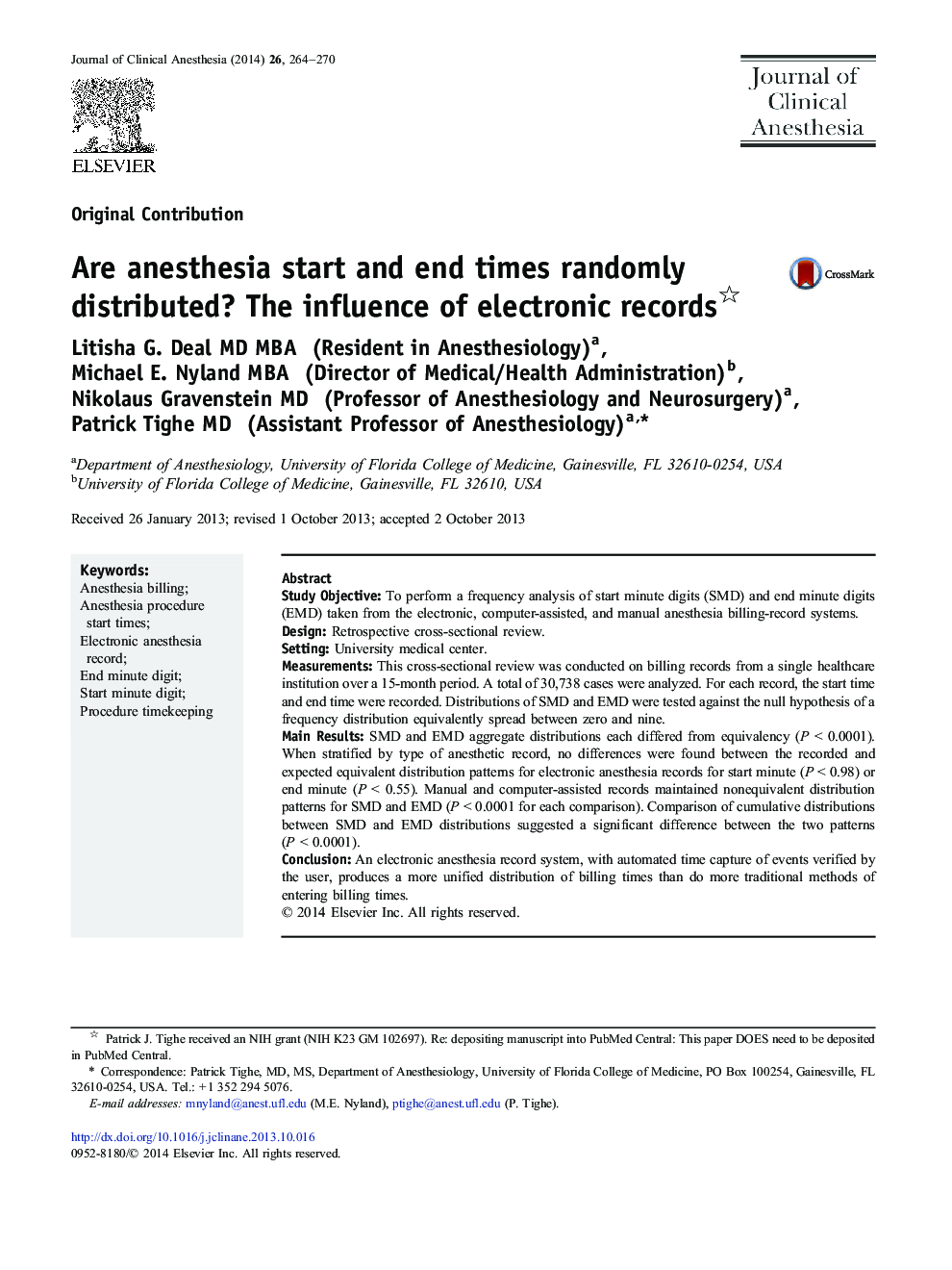| Article ID | Journal | Published Year | Pages | File Type |
|---|---|---|---|---|
| 2762322 | Journal of Clinical Anesthesia | 2014 | 7 Pages |
Study ObjectiveTo perform a frequency analysis of start minute digits (SMD) and end minute digits (EMD) taken from the electronic, computer-assisted, and manual anesthesia billing-record systems.DesignRetrospective cross-sectional review.SettingUniversity medical center.MeasurementsThis cross-sectional review was conducted on billing records from a single healthcare institution over a 15-month period. A total of 30,738 cases were analyzed. For each record, the start time and end time were recorded. Distributions of SMD and EMD were tested against the null hypothesis of a frequency distribution equivalently spread between zero and nine.Main ResultsSMD and EMD aggregate distributions each differed from equivalency (P < 0.0001). When stratified by type of anesthetic record, no differences were found between the recorded and expected equivalent distribution patterns for electronic anesthesia records for start minute (P < 0.98) or end minute (P < 0.55). Manual and computer-assisted records maintained nonequivalent distribution patterns for SMD and EMD (P < 0.0001 for each comparison). Comparison of cumulative distributions between SMD and EMD distributions suggested a significant difference between the two patterns (P < 0.0001).ConclusionAn electronic anesthesia record system, with automated time capture of events verified by the user, produces a more unified distribution of billing times than do more traditional methods of entering billing times.
